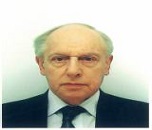Day 2 :
Keynote Forum
Lionel Fry
Imperial College London, UK
Keynote: Microbiome in psoriasis
Time : 10:20-11:00

Biography:
Lionel Fry has studied Medicine at King's College Hospital Medical School. He has entered dermatology in 1963 after house jobs and a Medical Registrar's post at King's. He was trained first at St John's, then St Thomas' and finally The London Hospital. Whilst at London he was awarded two MRC grants: One to study psoriasis and the other to study dermatitis herpetiformis. In 1969 he was appointed as Consultant Dermatologist at St Mary's Hospital in London. In 1997, he became a Professor of Dermatology at Imperial College, London. He is continuing his work on the role of microorganisms in psoriasis with colleagues at The Karolinska Institute in Stockholm. His research interests have focused on dermatitis herpetiformis and psoriasis and he is currently investigating the microbiome of psoriasis.rn
Abstract:
The investigation of the microbiome in psoriasis has raised the possibility that psoriasis is triggered by the bacteria in the skin in individuals with the genetic abnormalities. The microbiome has been investigated two methods, swabs and biopsies. In swabs in normal skin the commonest phylum is Actinobacteria and in psoriasis it is Firmicutes. In biopsies the commonest phylum is Firmicutes in both normal skin and psoriasis. At the genus level in swabs the commonest is Propionibacterium and in psoriasis Corynebacterium. In biopsies it is Streptococcus in both normal skin and psoriasis. The ratio of Streptococcus to Propionibacterium is raised in psoriasis compared to normal skin. Bacteria in the skin may have several actions: They can affect the innate immune system, affect T-cell function and may regulate the development of the immune system. Bacteria in the skin may be of primary etiological significance.
Keynote Forum
Evgeniya Ranneva
Skin Tech Pharma Group, Spain
Keynote: Clinical study to evaluate the efficacy of a combined treatment with medical devices CE class III in different baldness patterns
Time : 09:40-10:20

Biography:
Evgeniya Ranneva is presently working as a Dermatologist and Specialist in Rehabilitative and Reconstructive Medicine. She has completed her PhD in Aesthetic Medicine in 2003. She is an experienced Trainer of chemical peelings, International Trainer of fillers and botulinum toxin injection. She is the Founder of first public training course “New method: Mesotherapy”, “Homeomesotherapy in aesthetic medicine” (Russia). She is the Scientific Coordinator of educational project for “International Plastic-Aesthetic Residence” (Spain, Belgium and Italy). She is working as a Medical Advisor for Aesthetic Dermal SL and Project Head for “RRS-Inject” (Spain). Her main research focuses on dermatology, cosmetic dermatology and aesthetic medicine.
Abstract:
Hair loss becomes one of the most frequent problems of both genders, which motivates the patients to visit the dermatologist. Male and female baldness patterns have statistical, clinical and diagnostic differences. Medical device CE Class III, transdermal solution and cosmetic spray are capillary regenerators which revitalize and strengthen capillary fibre via a greater contribution of essential nutrients for capillary growth and a stimulating action of hair growth factors. A multi-center, open label, non-comparative pilot study was performed in 47 patients (32 women and 15 men) who had medical visit due to hair loss. The average age of the patients was 34 years and the evolution period of the alopecia condition was 5 years. Efficacy was determined at the 3rd and 6th months. The best efficacy was observed in case of symptomatic hair loss in the female pattern after pregnancy, nursing period, stress, starvation. In the male pattern which is related to the androgenic alopecia, the result gives satisfaction but further investigation will be necessary. The patient with androgenic alopecia received 12 treatments, once every two weeks. 60% of the patients were satisfied with result of the treatment after 12 weeks. Mesotherapy injections or micro needling combined with cosmetic spray induce the activation of the hair follicle which promotes en enlargement of the anagen phase and a shortening of the telogen phase, reversing the miniaturization of the hair follicles besides stop hair loss and promote new hair growth.
- Cosmetic Dermatology
Session Introduction
Evgeniya Ranneva
Skin Tech Pharma Group, Spain
Title: New medical approach for rejuvenation of the periorbital area

Biography:
Evgeniya Ranneva is presently working as a Dermatologist and Specialist in Rehabilitative and Reconstructive Medicine. She has completed her PhD in Aesthetic Medicine in 2003. She is an experienced Trainer of chemical peelings, International Trainer of fillers and botulinum toxin injection. She is the Founder of first public training course “New method: Mesotherapy”, “Homeomesotherapy in aesthetic medicine” (Russia). She is the Scientific Coordinator of educational project for “International Plastic-Aesthetic Residence” (Spain, Belgium and Italy). She is working as a Medical Advisor for Aesthetic Dermal SL and Project Head for “RRS-Inject” (Spain). Her main research focuses on dermatology, cosmetic dermatology and aesthetic medicine.
Abstract:
Medical device CE class III is a new potential synergistic treatment for circles under the eyes and lymphedema. It is injection into the tear trough area, palpebral malar groove and upper eyelid. The main medical proposal for this new therapeutic approach is to minimize side effects during long-term therapy and be effective and save. The most common treatment option in the periorbital area is with cross linked Hyaluronic Acid (HA) and therefore, it is important to be aware of the usual complications such as swelling by overcorrection, nodules and edema by compression of lymphatic system. Every ampoule of 1.5 mL contains 5.0 mg/mL of non cross linked HA associated with active biorevitalization solution (BS 27.3 mg/mL) and helps improving the transport function of the actives from biorevitalization solution. The complex actives of BS are: Antioxidants, flavonoids, saponins, polyphenols, peptides and trace element. The results of the study indicate that injections of this product applied on the tear trough, the palpebral malar groove and also the upper eyelid area is a safe and effective treatment with minimum side effects. Medical device CE class III does not cause edema has no overcorrection issues and neither Tyndall effect. The best efficacy was observed in case of volume loss on the area of tear trough and palpebromalar groove combined with lymphedema. Although the results of treatment are very satisfactory, they require further investigation.
Eyal Levit
Advanced Dermatology Laser and Cosmetic Surgery, USA
Title: Lower lid blepharoplasty: How to make it safer and easier

Biography:
Eyal Levit has completed his MD at the Albert Einstein College of Medicine in 1995. He has completed his Dermatology Residency at Columbia Presbyterian Medical Center. Following his Residency he has completed a one year MOHS Micrographic, Laser and Dermatologic Surgery Fellowship at the University of Pennsylvania, USA. He had an additional 2 years of Fellowship training in Cosmetic and Laser Surgery at Columbia University. Until recently he was the Director of Cosmetic and Dermatologic Surgery at St. Luke’s Hospital Columbia University, a post he held for 14 years. He currently runs an Advanced Dermatology Laser and Cosmetic Surgery, a thriving dermatology practice in New York City. He has published over 20 papers and is a recipient of multiple awards.
Abstract:
Eyelid surgery or blepharoplasty, improves the appearance of the upper eyelids, lower eyelids or both. Whether you want to improve your appearance or are experiencing functional problems with your eyelids, eyelid surgery can rejuvenate the area surrounding your eyes. Specifically, eyelid surgery can treat: Loose or sagging skin that creates folds or disturbs the natural contour of the upper eyelid, sometimes impairing vision; Excess fatty deposits that appear as puffiness in the eyelids; Bags under the eyes; Drooping lower eyelids that reveal white below the iris; and excess skin and fine wrinkles of the lower eyelid. A simple and novel method for lower lid blepharoplasty under local anesthesia recently published in the Journal of the American Academy of Dermatology is reviewed and its benefits over traditional transconjunctival and transcutaneous blepharoplasties are discussed in detail. A broad and thorough understanding and basic skills will be outlined to the surgeon interested in lower lid blepharoplasty which would enable him to offer this safe and simple procedure for his patients.

Biography:
Maria Paulina Estrada is currently pursuing her Medical degree from CES University. She is a Member of Scientific Association of Medical Students University CES. She has published one Surgical Pearl in Journal of the American Academy of Dermatology (JAAD) and Foreign Guest Presenter on CME Grand rounds at New York Presbyterian Hospital.
Abstract:
Dermal fillers help to diminish facial lines and restore volume and fullness in the face. As we age, our faces naturally lose subcutaneous fat. The facial muscles are then working closer to the skin surface, so smile lines and crow’s feet become more apparent. Dermal fillers can be very helpful in those with early signs of aging or as a value added part of facial rejuvenation surgery. Dermal fillers can be used to plump thin lips, enhance shallow contours, soften facial creases and wrinkles and improve the appearance of recessed scars. The safe technique of fillers used in the earlobe with Voluma and the sculpting of the nose will be discussed showing before and after photos. The discussions, before and after photos will help the participant offer a wider variety of solutions to their patients who may otherwise be contemplating earlobe surgery or rhinoplasty.
Evgeniya Ranneva
Skin Tech Pharma Group, Spain
Title: Medical device CE class III increases transcription of collagen type 1 and elastin genes in human skin fibroblast in vitro

Biography:
Evgeniya Ranneva is presently working as a Dermatologist and Specialist in Rehabilitative and Reconstructive Medicine. She has completed her PhD in Aesthetic Medicine in 2003. She is an experienced Trainer of chemical peelings, International Trainer of fillers and botulinum toxin injection. She is the Founder of first public training course “New method: Mesotherapy”, “Homeomesotherapy in aesthetic medicine” (Russia). She is the Scientific Coordinator of educational project for “International Plastic-Aesthetic Residence” (Spain, Belgium and Italy). She is working as a Medical Advisor for Aesthetic Dermal SL and Project Head for “RRS-Inject” (Spain). Her main research focuses on dermatology, cosmetic dermatology and aesthetic medicine.
Abstract:
Mesotherapy/biorevitalization with hyaluronic acid (HA) is a treatment approach currently used for skin rejuvenation. Various products are available on the market and present a wide range of polycomponent formulations. Most of those formulations contain non cross linked hyaluronic acid in combination with a biorevitalization cocktail, formed by various amounts of vitamins, minerals, amino acids, nucleotides, coenzymes and antioxidants. Although ingredients are very similar in-between the different products, in vitro and clinical effects may vary substantially. There is a real need for better characterization of those products in terms of their action on human skin or in vitro skin model. In this study, we analyzed the effect of Medical device Class III based in HA on human skin fibroblast in vitro. Skin fibroblast viability and capacity to induce the production of key extracellular matrix was evaluated in presence of different concentration of RRS HA injectable. Viability was evaluated through MTT assay and key extracellular matrix genes collagen type 1 and elastin were quantified by quantitative PCR. Results demonstrated that the product could promote human skin fibroblast viability (+15%) and increased fibroblast gene expression of collagen type 1 gene a 9.7 fold and elastin a 14 fold time in vitro. Those results demonstrate that mesotherapy/biorevitalization products can effectively modulate human skin fibroblast at least in vitro.
